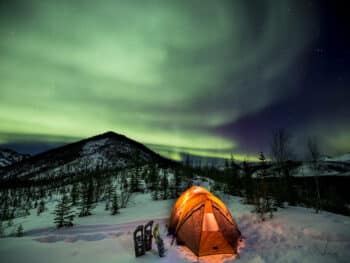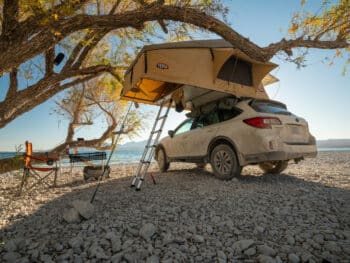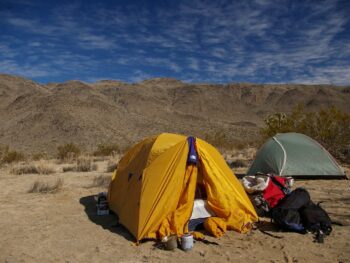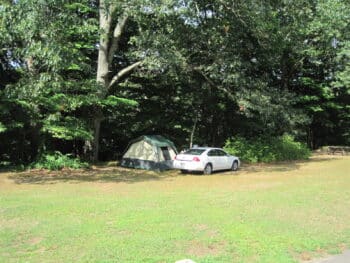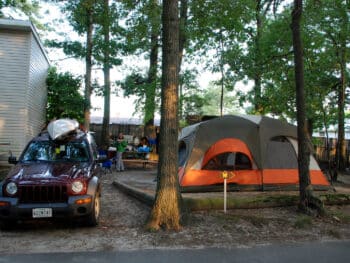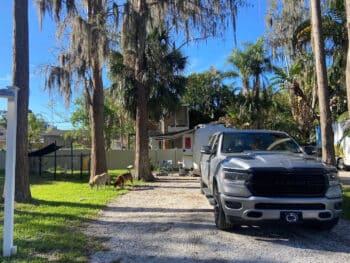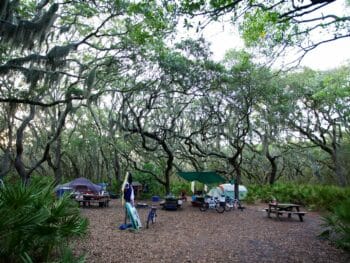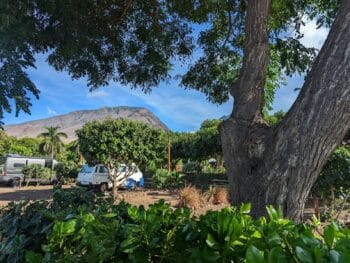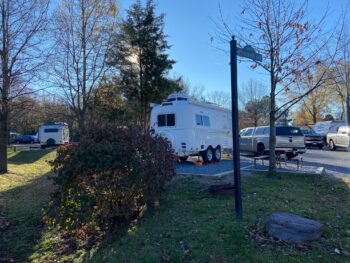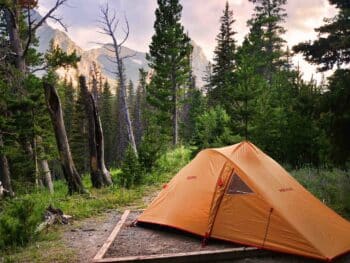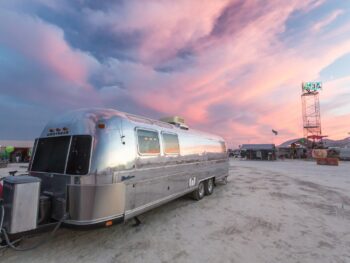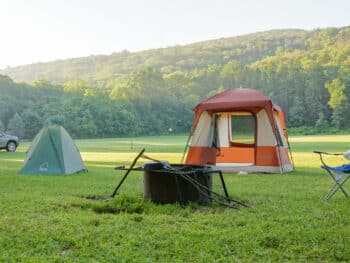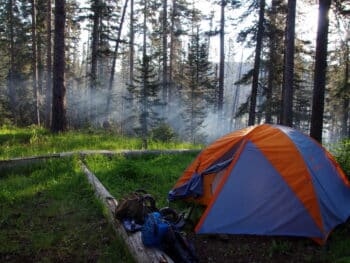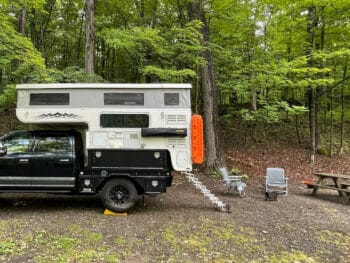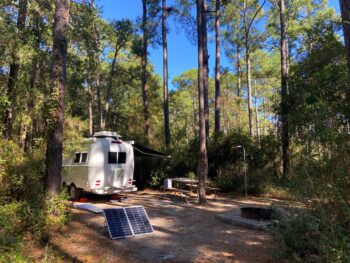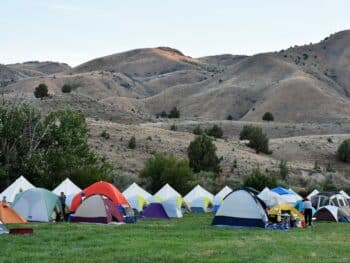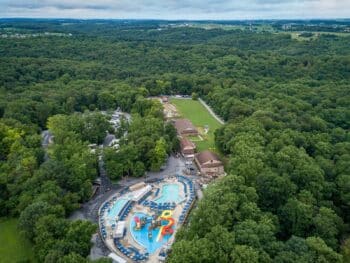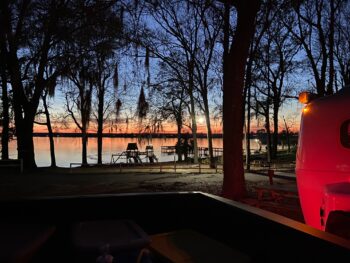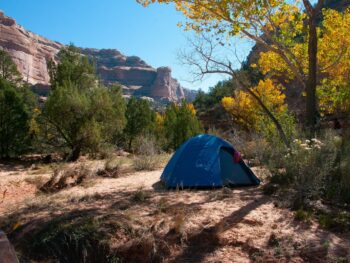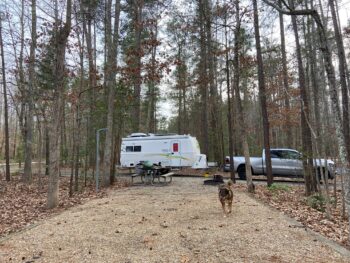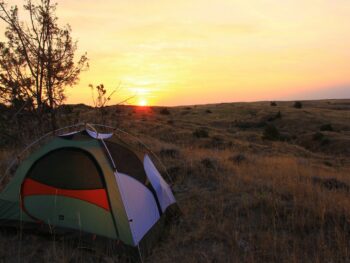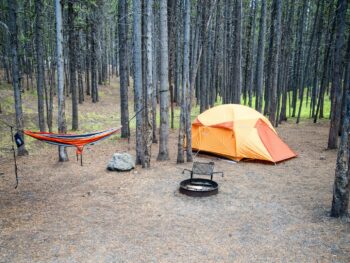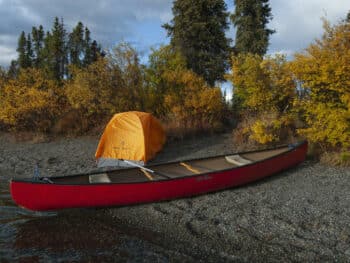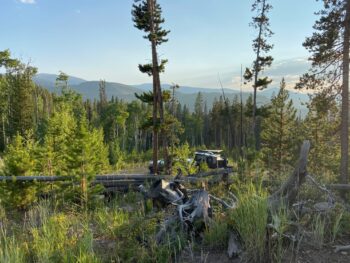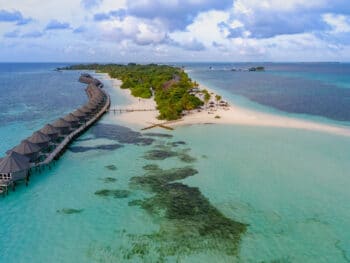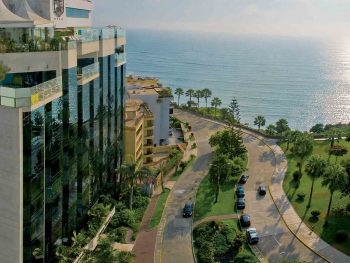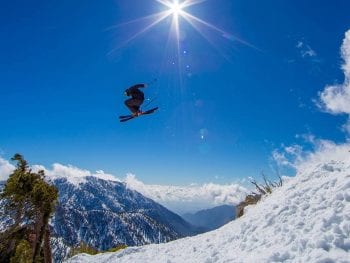Whether it’s your first time or you’re an experienced boondocker, camping is one of the best ways to see the landscapes of the world, up close and personal. It’s also an affordable way to stay overnight in many countries too. There are many accommodations for campers, ranging from a traditional tent or simple hammock to fully-loaded RVs and motorhomes.
Camping by American State
Campgrounds in the United States are easy to find in any destination. The camping season varies by geography, with the northern states typically closing their campsites over the winter, usually sometime by end of September or early October. Whereas the year-round warmer states will usually keep their campgrounds open all the time, although you might have to put up with some serious summer heat.
Camping by Country
Traveling around the world and camping overnight is a safe option in many countries. Typically, you’re responsible for either driving your own camper van or RV, towing a trailer behind a vehicle, or pitching a tent once you reach your campsite. But in some cases, such as guided backpacking trips, your guide will provide and pitch your tent. And sometimes you can arrange to have a travel trailer delivered right to your campground. Or find a glamping spot where you can rent a night in Airstream, tent structure, teepee, or yurt.
Featured Campgrounds
How To Go Camping For The First Time

Camping is found all over the world, which is fairly obvious…it’s pretty much just sleeping outside right, but in a tent, van, trailer, or something in-between. Though certainly some countries do it better than others and offer more developed facilities for pitching a tent or parking your RV. In countries like the United States, Canada, and Australia, camping is a national pastime.
There are generally two kinds of camping, either in a tent or in a vehicle or trailer with wheels. The former is generally soft-sided, while the latter is hard-sided. Each offers advantages and disadvantages, and plenty of hybrid options. Let’s look at the most common accommodations for spending a night under the stars.
Cots

Cots are simply elevated sleeping platforms. They can act as their own sleeping pad/mattress, though you can certainly add a sleeping pad on top of these for maximum comfort. Cots are usually lightweight, fold up nicely, and are easy to travel with. And some reviews on cots rave about a better night’s sleep than their home bed.
If you’re in a warmer climate with few natural predators, some people will just lie on a cot outside under the stars and go to bed. They can also be used inside a tent if there is room, or even in the back of a large truck bed (with or without a topper) if there’s space.
Hammocks

Another option similar to a cot for those looking to sleep outside without a tent is a hammock. These are known to be very good for your back and provide terrific rest. They are fairly cheap to buy and are best used in heavily wooded areas. Some provide mosquito bug netting to keep out the flying pests.
You likely won’t be carrying around a heavy metal hammock platform with you, though that is an option, and there are those that disassemble relatively easily and pack compactly. So, what most campers will do is tie their hammocks in between two mature and well-spaced trees, which is usually harder than finding a level ground to pitch a tent.
Soft-Sided Tents

To most folks, camping takes place in a soft-sided tent that you either pitch yourself on the ground or the more recent phenomenon, a rooftop tent (more on that later), which is more quickly raised up. Tents come in all shapes, sizes, colors, and price points.
There are four-season tents that are capable of Arctic conditions, and those designed for rainy areas where the rainfly is attached and can be pitched at the same time, thus keeping the interior dry. In a traditional tent, you would pitch with the tent body first, which is screened for comfort and looking at the stars, and then throw the rainfly overtop next.
While you might be tempted to buy that massive mansion tent at your local superstore, they stay much colder inside than a smaller tent, which would heat up quicker. There’s just too much extra air to warm up, and they also tend to be taller. You can stand up in some of these, especially the ones with multiple rooms. Remember hot air rises.
The smaller the tent the easier it will be to set up and take down, most of the time. Tents are usually rated 1-person, 2-person, 3-person, etc., so it’s a good practice to size up one more than you need. So if it’s just you and another person in the tent, opt for a 3p for practical comfort.
Look for one with a vestibule (or two) to store your shoes and other wet/dirty items outside the main body of your tent, but still protected from the elements. And no matter how cold it gets, always vent your tent a little bit. Most come with vents for the purpose of keeping air flowing and humidity down. Your tent will get moisture inside from all your hot air-breathing combined with the colder air outside.

The advantages are their cheaper cost and freedom to pitch a tent nearly anywhere that’s allowed with level ground. If you’re one to look for free dispersed camping, having a smaller footprint like a tent will greatly increase the number of sites you can access.
The downsides are they get cold if it’s cold outside. There’s no heater, but that’s part of the experience and with proper gear and sleeping bags, it’s not an issue. Remember to use sleeping pads underneath you to keep that cold ground from sapping all your body heat.
Lastly, if you’re camping in grizzly bear country (Western Canada or in the US: Alaska, Washington, Idaho, Montana, and Wyoming), and in a tent, stick to only popular campgrounds in busy areas. Don’t go dispersed camping where there are grizzlies in any soft-sided structure. To do this, you’ll want to be in a hard-sided unit like a trailer, RV, or van, and follow all safety protocols.
Anywhere with black bears (mostly all of the US and Canada) do not dare sleep with food or anything that spells like toiletries inside your tent. Keep that stuff locked up in your car or raised high from a tree away from your campsite.
Rooftop Tents

Within the last few years, rooftop tents have blown up in popularity. You may notice these flat, usually black, storage containers on top of SUVs and trucks, which house these portable homes. Some are completely soft-sided, and others have hard roofs and/or hard sides. Many vehicles too will be able to accommodate them, even cars and smaller SUVs that would be unable to tow a trailer safely.
They’re loved for many reasons, including:
- They pop and are ready to go in a matter of minutes, and also pack up just as fast.
- The higher height of these tents increases the stunning views and provides some increased safety from the ground below.
- Most of them are sturdier than traditional tents and do better in high winds.
- Some even overhang off your vehicle creating a small awning and patio area if you will.
The cost is an advantage and disadvantage depending on how you see it. They are much more affordable than a travel trailer that you’d tow behind your vehicle, but also much more expensive than a traditional ground tent.
The other biggest downside of a tent or travel trailer is that it’s attached to your vehicle. So if you want to go to town or sightseeing, you have to pack up your home. And if you’re primitive camping, you’ll have to leave something behind to reserve your spot. This is the same issue that vans and RVs face.
Travel Trailers (Caravans and Campers)

Those in the US and Canada typically call this home-on-wheels that’s towed behind a vehicle a travel trailer, or simply a camper. Whereas in the Land Down Under, Aussies will call it a caravan. These are likely the most popular form of hard-sided structure, even more so than vans and RVs (which we’ll discuss next).
Like tents, travel trailers come in a wide variety of shapes, sizes, weights, materials, and costs. Typically you’ll find the exterior of caravans made with one of three main materials: aluminum, steel, or fiberglass. For four-season camping and reliability, fiberglass is likely the best choice.
The size ranges from about 10 feet long to 45 feet, and 6 to 8 feet wide. They’ll weigh anywhere from 500 pounds, well upwards of 10,000 pounds. So depending on what you opt for, your tow vehicle can be anything from a simple sedan to a one-ton truck.
The smallest type of trailer is a teardrop or one of a similar size. They usually only have a bed inside, though it’s probably a queen, but still no room to stand up. In the rear hatch of most will be an outdoor kitchen, but they almost all lack bathrooms.
Stepping up from that is a huge range of tow-behinds. You’ll see one, two, and three-axel trailers to support the varying weights and sizes. These have two, four, and six wheels, respectively. If you’re going for a bigger caravan, opt for the two-axel (or three), as it allows a more comfortable ride and margin of error should one tire get punctured.

Another type of travel trailer you’ll come across is called a fifth wheel. These are attached directly to the back of a pickup truck and are often the largest of the bunch. There’s usually a bed in a loft area over the rear of the truck and they are easier to tow than a comparably-sized travel trailer that isn’t a fifth wheel.
There are several advantages of trailer travel over an RV (which is a vehicle itself and contains an engine) and a tent:
- On average, they cost far less than the typical RV.
- You can detach them from your vehicle and leave them at your campsite, freeing up your tow vehicle for exploring.
- Most have heaters, kitchens, and bathrooms, providing all the necessary amenities for a home away from home. Some have air conditioners too.
Like an RV, most travel trailers are completely hard-sided and insulated. This allows you to camp without the fear of animals lurking about, and stay warm on those cold nights. They also do great in high wind conditions.
Though there are pop-up models that are a hybrid of a hard-sided camper with more durable tent-like material in places (which pops up or out). Pop-up trailers are cheaper and lighter than traditional ones, so they certainly have their appeal. Though they will be harder to keep warm if you’re camping in fridge climates.
Recreational Vehicles (RVs, Motorhomes, Campervans)

RVs are commonly used to infer both RVs and travel trailers, but the real difference is the former you drive and has an engine, while the other is towed behind another vehicle. There are considered three types of RVs, though if you include travel trailers in the definition, there is a fourth type:
- Class A
- Class B
- Class C
- Towable RVs or travel trailers
Class A is the largest and is often called a motorhome. These will usually cost the most money and also be the most upscale, with the amenities of a luxury home. Because of their long length, they are harder to drive in cities than a Class B or C. However, most make up for this by pulling a “toad”, which is a nickname for another smaller vehicle that is towed behind the motorhome. It’s usually a small car or for the adventurous, a Jeep Wrangler.

Class B is considerably smaller than Class A. These are campervans with a higher roof that are specifically built to be recreational vehicles. This means they come with everything you’d need built-in, including a freshwater tank and grey tank, and maybe a black tank if there’s a bathroom. Pros are that they are much easier to drive around, can fit in far more spaces, and are typically cheaper.
Class C is a bit of a cross between Class A and B, offering more space than B, but less than A. They’re built on truck beds and usually feature a lofted bed just like a fifth wheel travel trailer. These can be rugged too, so for those looking for an off-road option, consider a Class C RV.
Outdoorsy.com and RVShare.com in the US, allow you to rent one directly from local owners. There are also established companies like CruiseAmerica and plenty of smaller outfits in every state that rent out some form of recreational vehicle.
Conversion Vans (Camper Vans/Campervans)

While there certainly is nothing new about camping in a van (down by the river), conversions to popular models like the Mercedes Sprinter, Fort Transit, and Ram Promaster vans have absolutely blown up in recent years. If you’re unaware of this just look up the hashtag “#vanlife” on any of your social media sites or search engines.
Most converted vans come equipped with kitchens and a big bed, while very few provide onboard toilets and showers, though it is a possibility. They are fairly similar to a Class B RV, except that they aren’t necessarily built to all the same RV standards. Picture someone buying a van and putting a bed in it, versus a company designing a van from the get-go with all the amenities and requirements of a certified RV.
While these vans might come standard with a bed of sorts, and possibly even a kitchen area, most require extra modifications to add running water and a toilet. One of the most common van life quirks is not having a bathroom onboard and instead using public toilets and/or the Great Outdoors.
Just like trailers and RVs, if you lack your own, you can rent one. The same Outdoorsy and RVShare websites carry plenty of camper vans that you can rent directly from another person.
Whichever method you use for ensuring a comfortable sleep and fun time in nature, you’ll cherish your time spent outside. The key to a successful first (or 1,000th) camping trip is being comfortable, which equates to being prepared. Safe travels!



